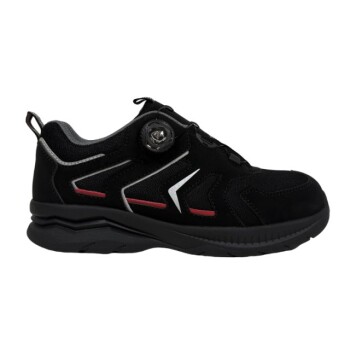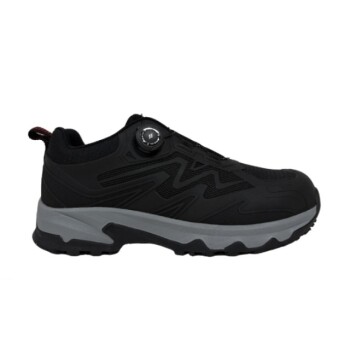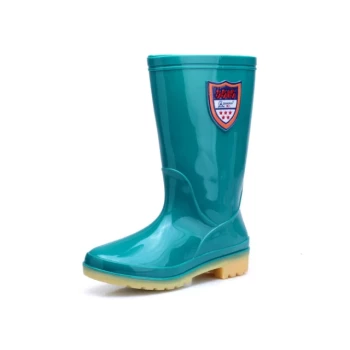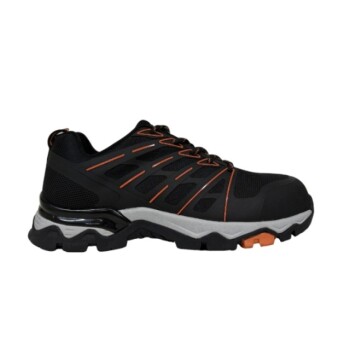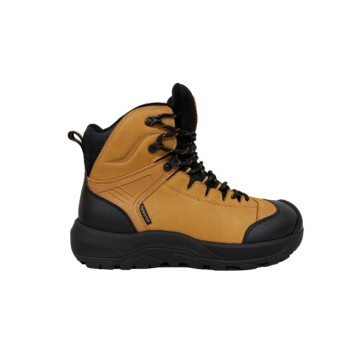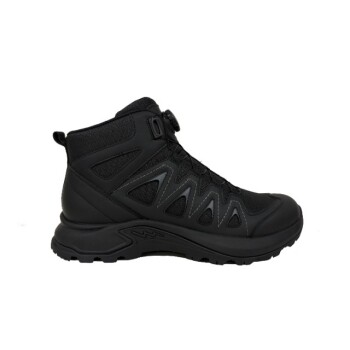No, there is no single best type of shoe sole. The ideal choice is a direct function of your intended use, from navigating a boardroom to walking city streets. Each material offers a distinct combination of durability, comfort, and aesthetic appeal, making the "best" sole the one that is best suited for a specific task.
The choice of a shoe sole is a strategic trade-off between formality, durability, and environmental performance. Understanding the core purpose of each material allows you to select footwear that is not just appropriate, but truly functional for your needs.
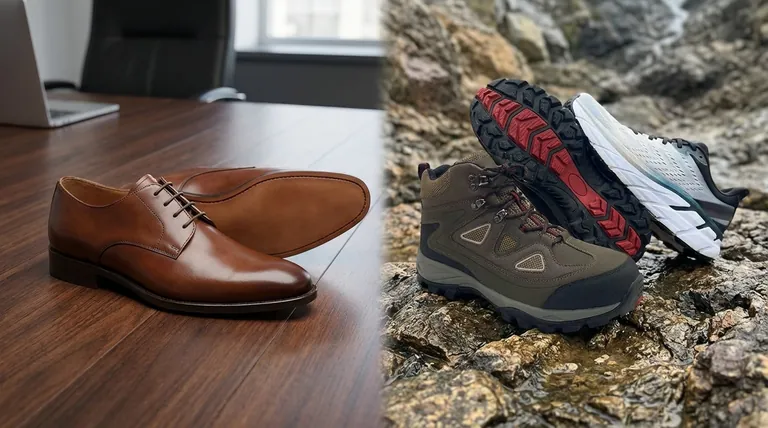
The Core Materials: A Functional Breakdown
To make an informed decision, you must first understand the fundamental properties of the most common sole materials. Each is engineered with a different priority in mind.
Leather Soles: The Standard for Formality
Leather is the traditional choice for dress shoes and is widely considered the pinnacle of elegance. Its sleek, classic profile cannot be replicated by synthetic materials.
Beyond aesthetics, leather soles are highly breathable and will gradually mold to the shape of your foot, offering a customized and comfortable fit over time.
Rubber Soles: The Foundation of Durability and Grip
Rubber is the workhorse of the footwear world, prized for its practical performance benefits. It offers significantly better traction and water resistance than leather.
These qualities make rubber the default choice for premium sneakers and casual or daily-wear shoes where all-weather grip, comfort, and long-term durability are the highest priorities.
Foam and Combination Soles: Prioritizing Comfort and Versatility
Modern footwear often utilizes foam (like EVA) or combination rubber-and-foam soles to maximize cushioning and minimize weight.
These are typically found in athletic shoes or comfort-oriented daily footwear, providing excellent shock absorption and flexibility for high mobility.
Understanding the Trade-offs
Choosing a sole material is an exercise in balancing competing benefits. What you gain in one area, you often sacrifice in another.
The Formality vs. Function Dilemma
The most common trade-off is between classic style and practical performance. Leather offers an unmatched formal aesthetic but provides poor grip on wet surfaces and can be easily damaged by water.
Conversely, rubber delivers superior function in terms of grip and weather resistance but is inherently more casual and lacks the refined appearance of a well-crafted leather sole.
Durability and Maintenance
While both materials can be durable, their maintenance needs differ. High-quality leather soles can last for decades but require care, such as avoiding inclement weather and conditioning the material.
Rubber is extremely low-maintenance but will eventually wear down. On many modern shoes, a worn-out rubber sole cannot be replaced, meaning the entire shoe must be discarded.
Environmental Considerations
The environment where you wear the shoe is a critical factor. Leather’s natural flexibility can feel comfortable on soft, uneven ground like dry grass.
However, its lack of grip makes it a poor and potentially hazardous choice for wet terrain. Rubber's superior traction makes it a far safer and more practical option for almost any outdoor or unpredictable condition.
Making the Right Choice for Your Goal
Your primary objective should guide your selection. Use this framework to decide.
- If your primary focus is formal elegance and tradition: Choose leather soles for their classic aesthetic in professional or event settings.
- If your primary focus is daily comfort and all-weather durability: Opt for rubber soles, which provide superior grip, cushioning, and resistance to the elements.
- If your primary focus is athletic activity or maximum cushioning: Look for foam or advanced combination soles engineered for mobility and shock absorption.
By understanding the distinct purpose of each material, you can select a sole that not only completes your look but truly serves your needs.
Summary Table:
| Sole Material | Best For | Key Benefits | Key Drawbacks |
|---|---|---|---|
| Leather | Formal Elegance | Classic look, breathable, molds to foot | Poor wet grip, not weather-resistant |
| Rubber | Daily Durability | Excellent traction, water-resistant, long-lasting | Less formal appearance |
| Foam/Combination | Athletic Comfort | Lightweight, superior cushioning, flexible | Less durable than rubber, casual style |
Need the Perfect Sole for Your Footwear Line?
As a large-scale manufacturer, 3515 produces a comprehensive range of footwear for distributors, brand owners, and bulk clients. Our production capabilities encompass all types of shoes and boots, ensuring you get the ideal sole material for your target market—whether it's the elegance of leather, the durability of rubber, or the comfort of foam.
Let us help you create footwear that perfectly balances style and function. Contact our team today to discuss your manufacturing needs!
Visual Guide
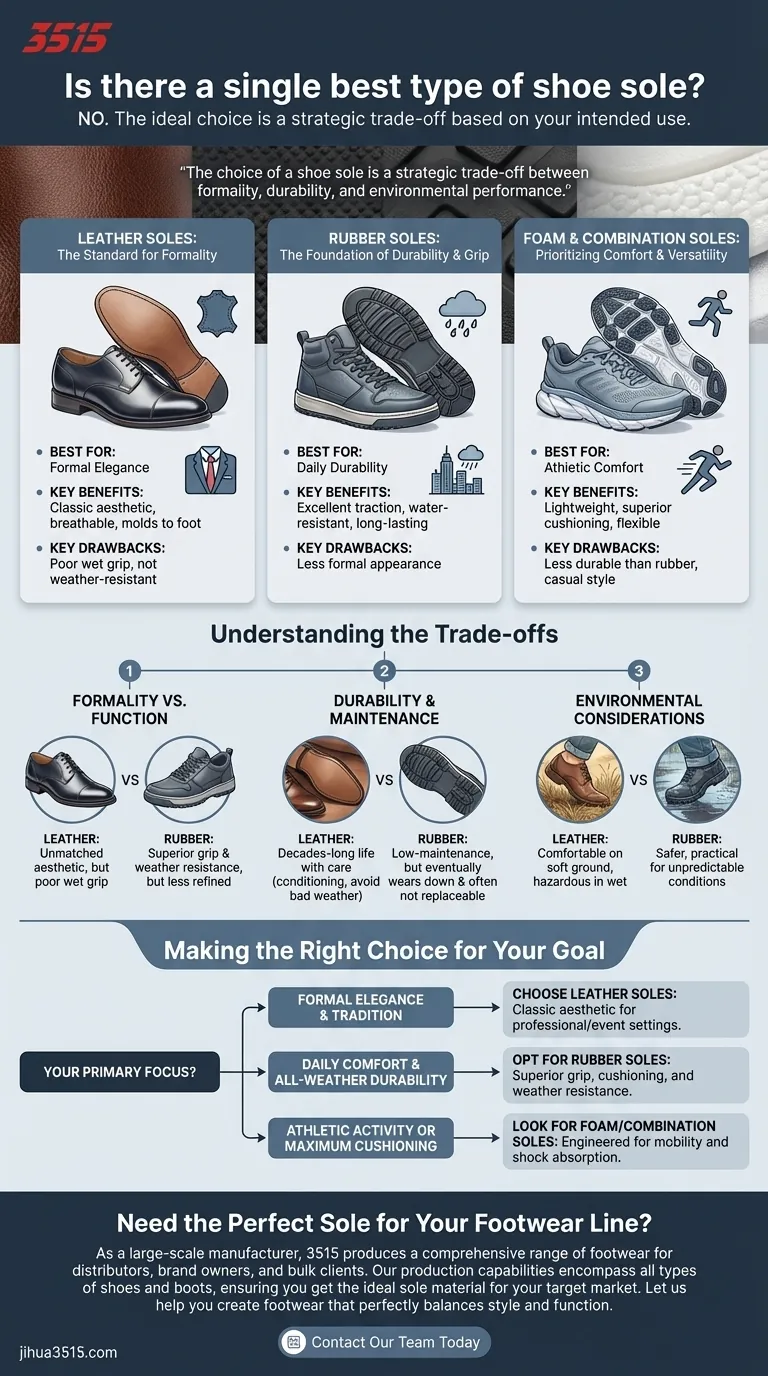
Related Products
- Safety Footwear Wholesale Manufacturer for Custom OEM/ODM Production
- Wholesale Leather Work Boots with Customizable Wedge Sole for Brands
- Factory-Direct Wholesale Canvas Boots with High-Traction Rubber Soles
- Premium Safety Shoes with Rotating Buckle Safety Sneakers
- Advanced KPU Athletic Safety Shoe with Steel Toe Cap Anti-Slip Rotary Lacing System
People Also Ask
- What are OSHA approved shoes? Understanding the Correct Standards for Workplace Safety
- What do heavy duty boots do? Protect Your Feet in Demanding Work Environments
- What cultural and environmental considerations are tied to wearing shoes indoors? Balance Hygiene, Tradition, and Foot Health
- What are the cultural perspectives on wearing shoes in the house? A Guide to Home Etiquette & Hygiene
- How long can you wear safety boots? The Lifespan is Determined by Wear, Not Time



